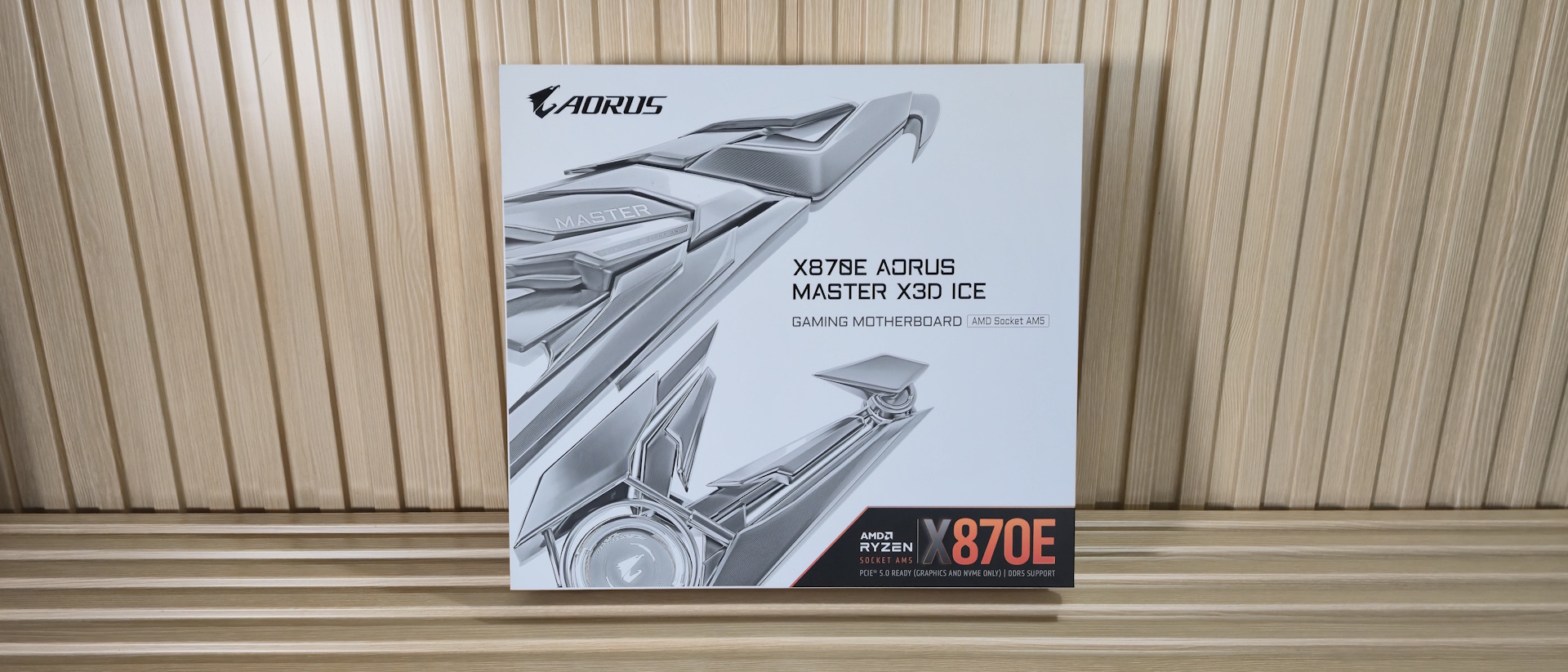Why you can trust Tom's Hardware
Benchmark Results
Our standard benchmarks and power tests are performed using the CPU’s stock frequencies (including any default boost/turbo) with all power-saving features enabled. We set optimized defaults in the BIOS and the memory by enabling the XMP profile. For this baseline testing, the Windows power scheme is set to Balanced (default) so the PC idles appropriately.
Synthetic Benchmarks
Synthetics offer a valuable method for evaluating a board's performance, as identical settings are expected to yield similar results. Turbo boost wattage and advanced memory timings are areas where motherboard manufacturers can still optimize for stability or performance, though, and these settings can impact specific testing scenarios.
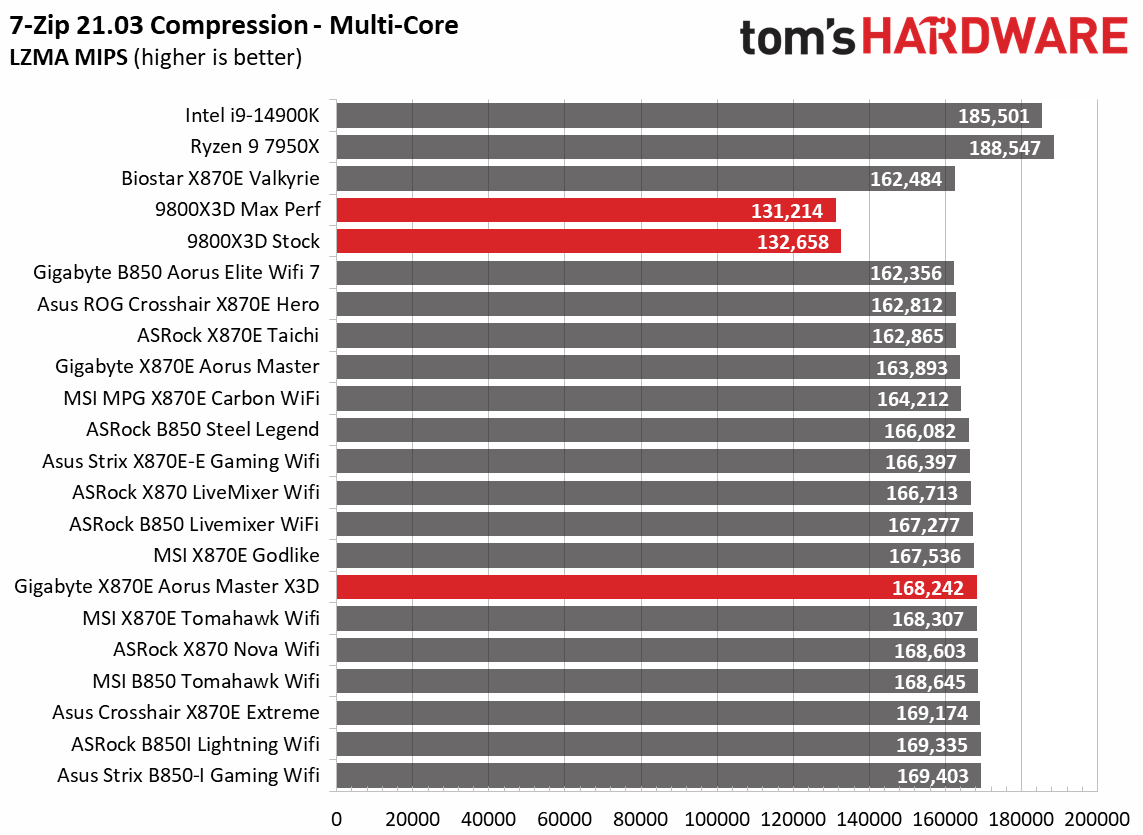

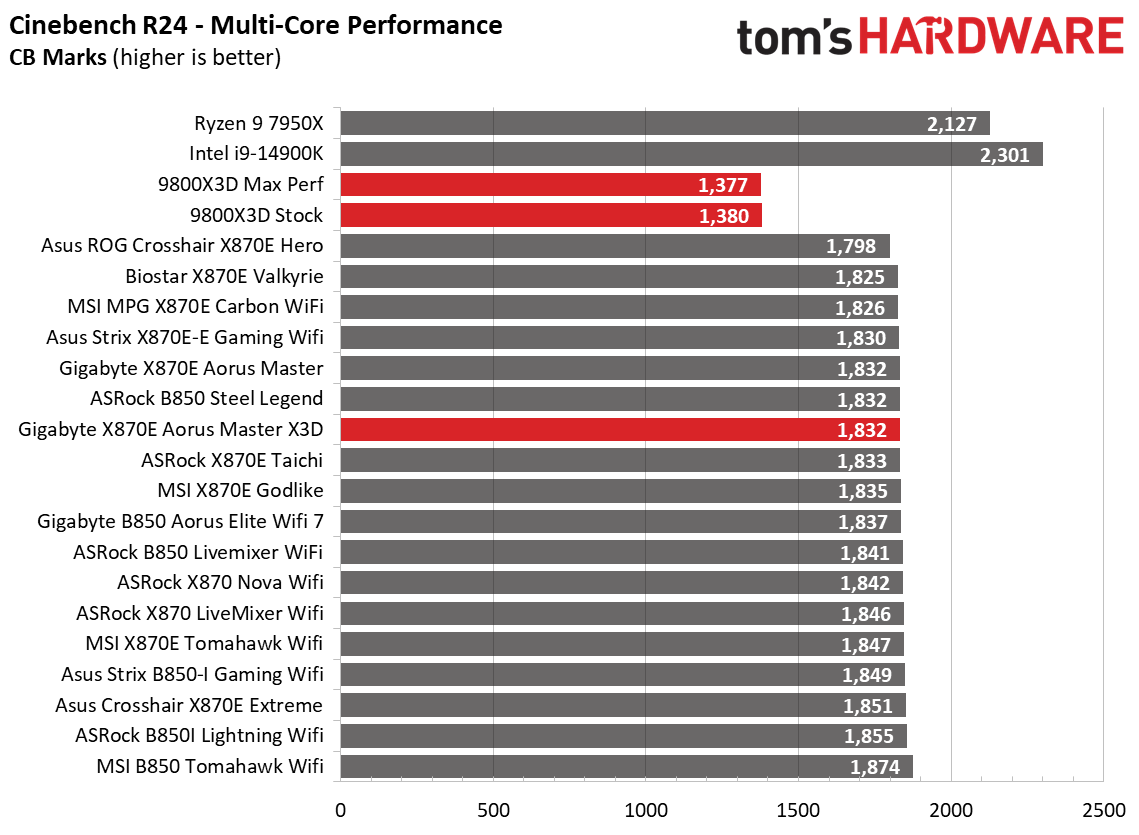
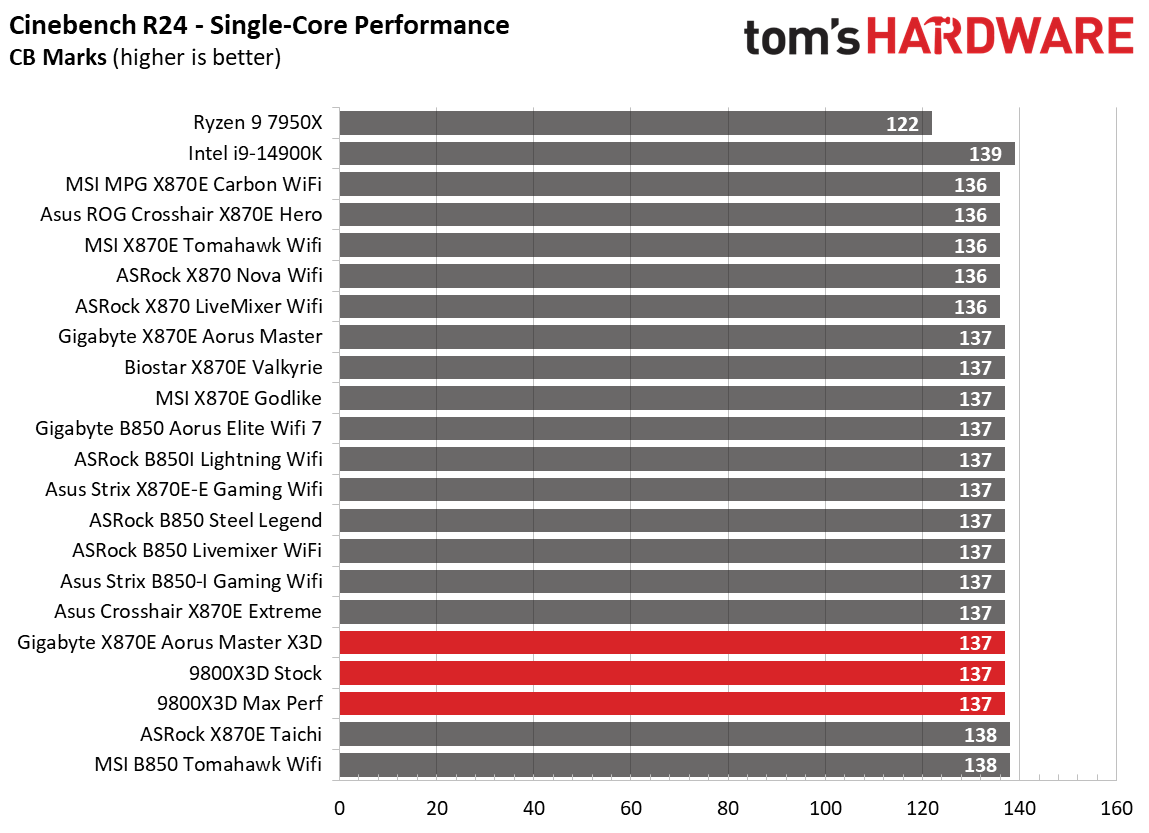
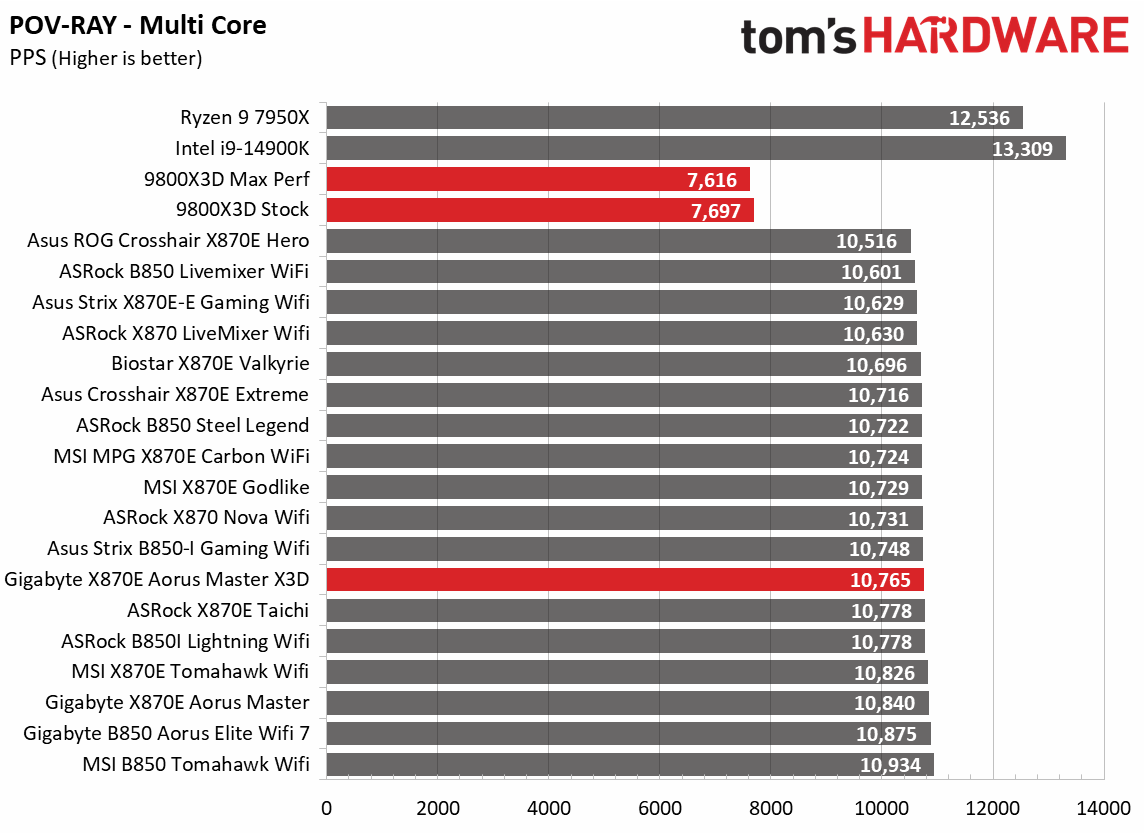

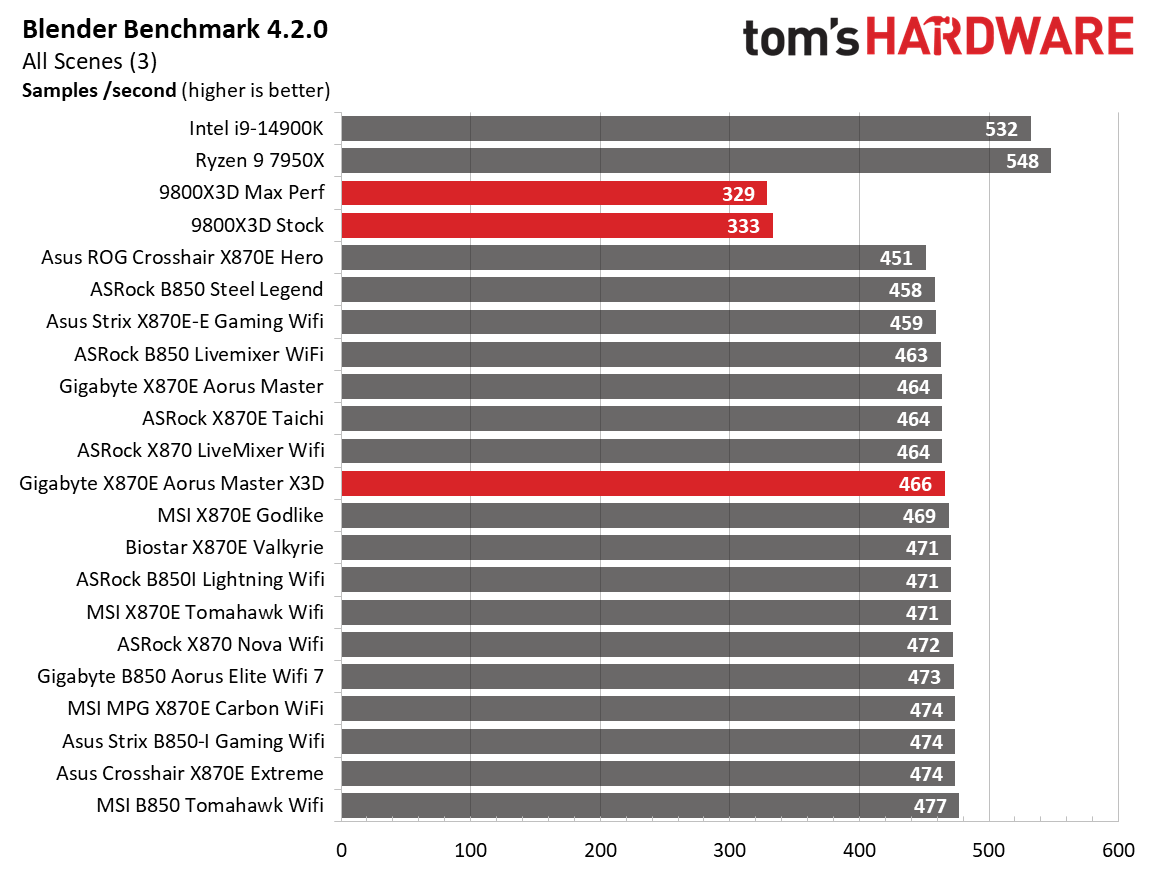
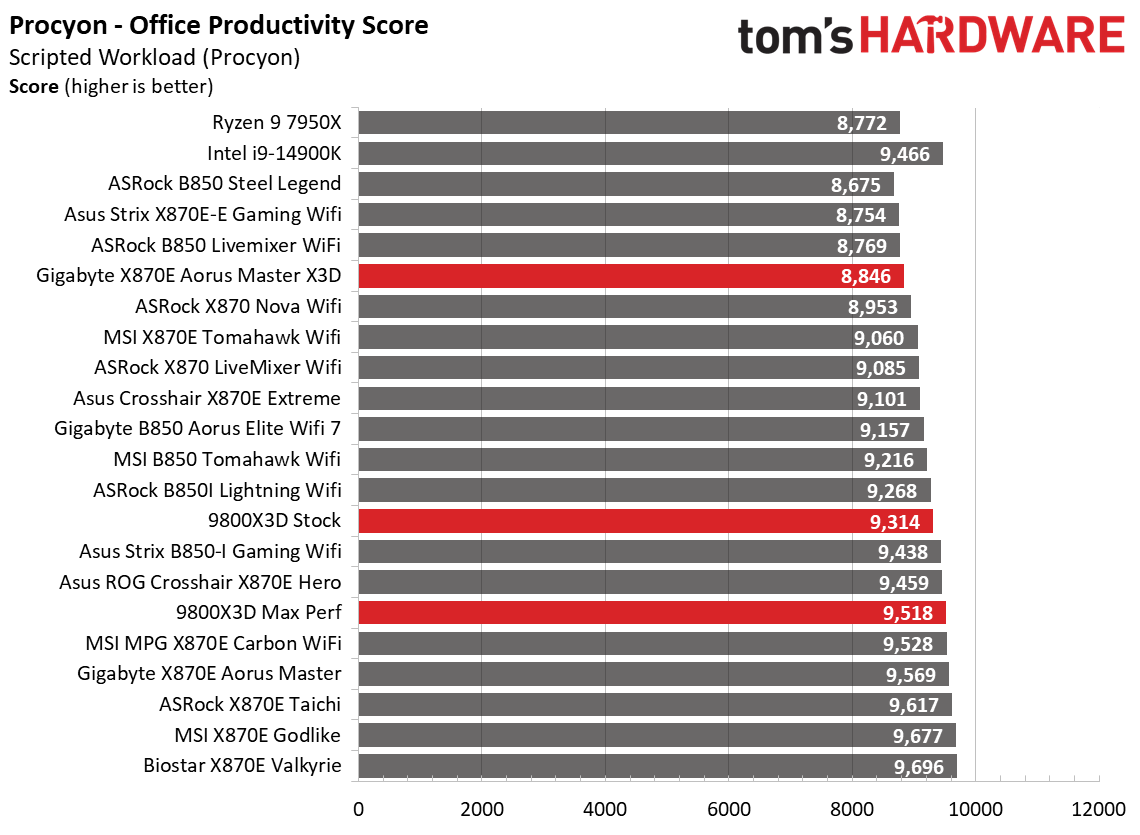

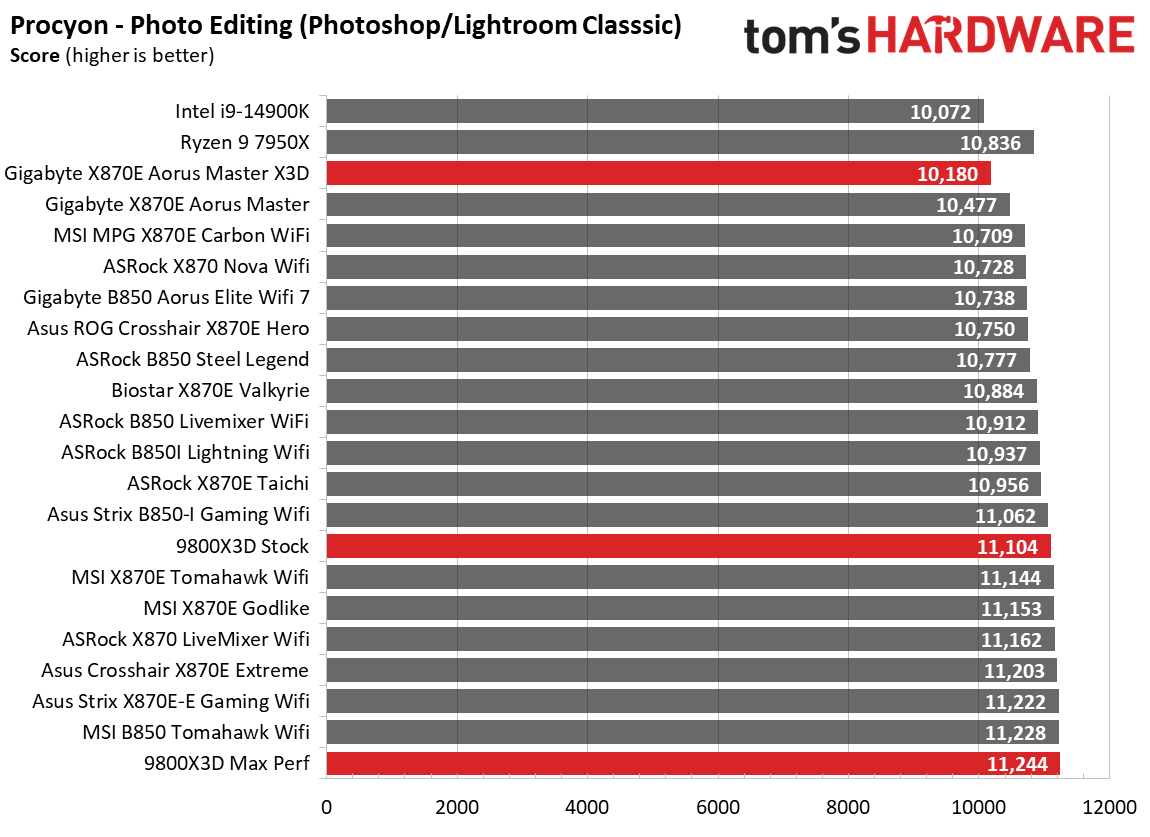
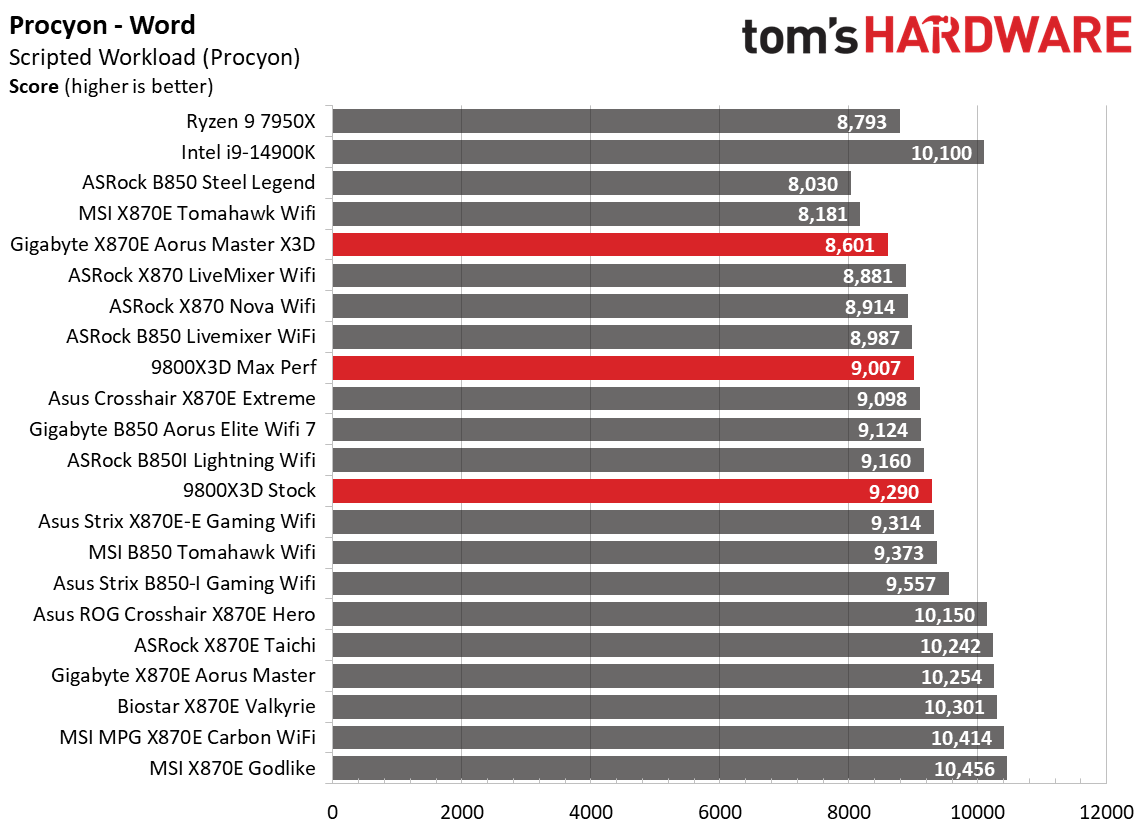
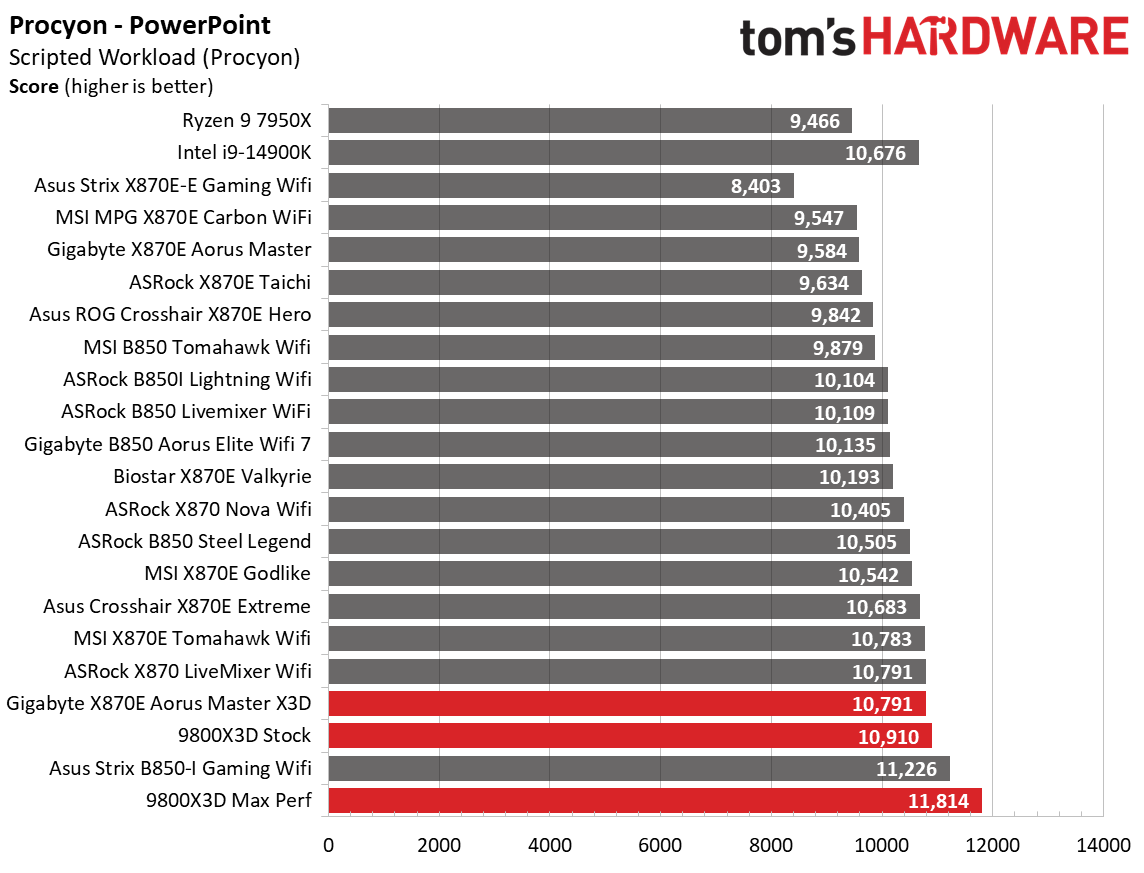
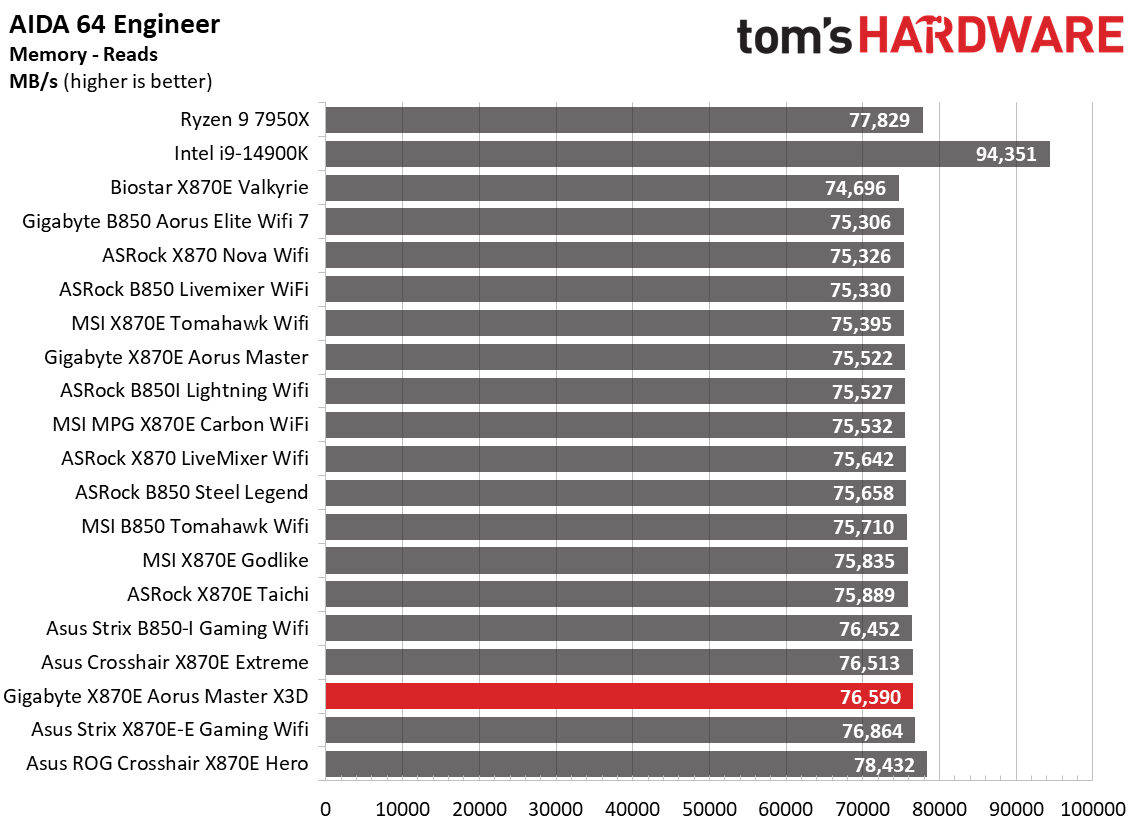
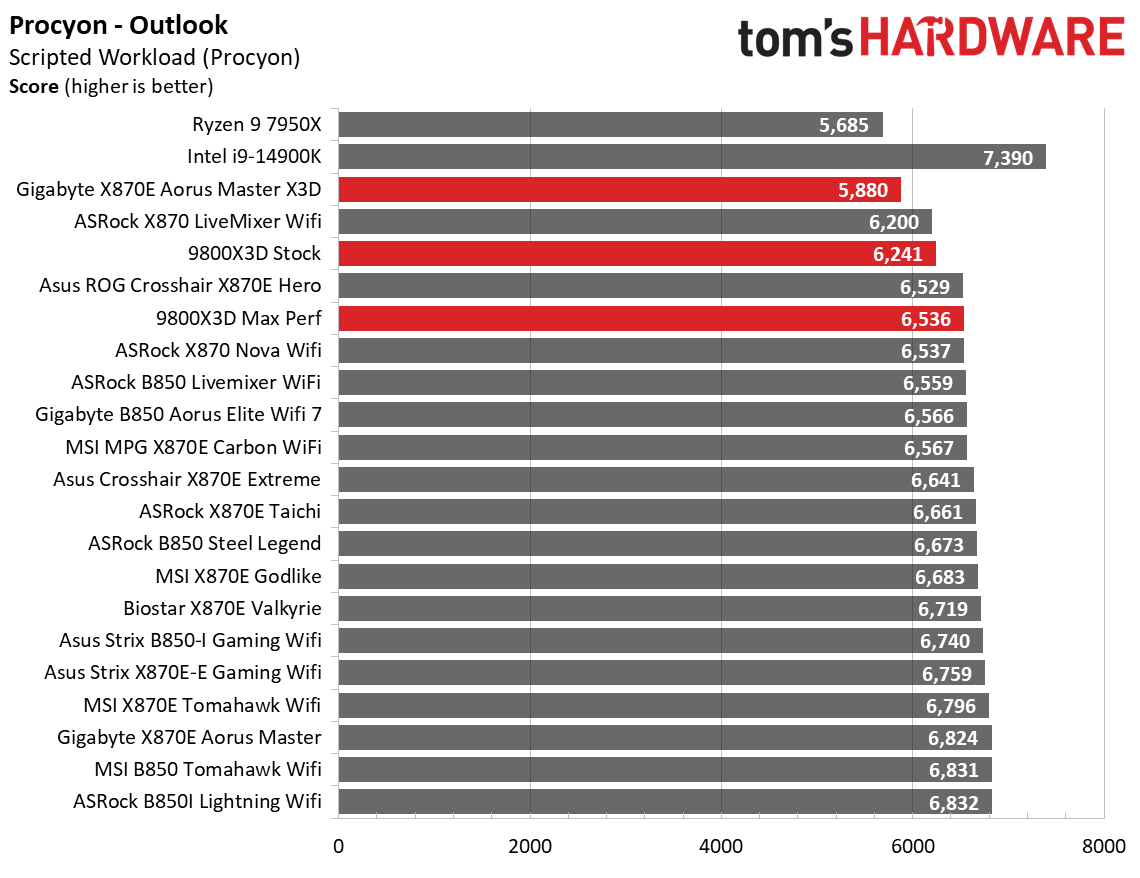

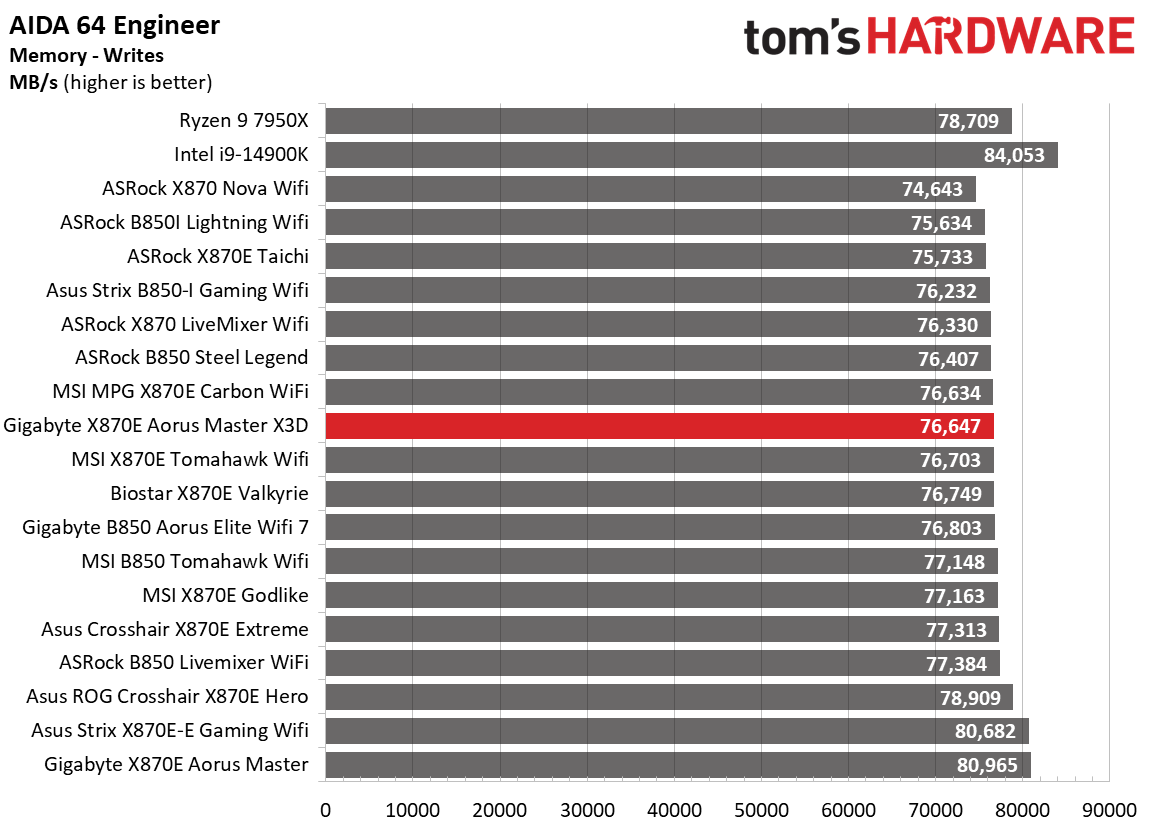
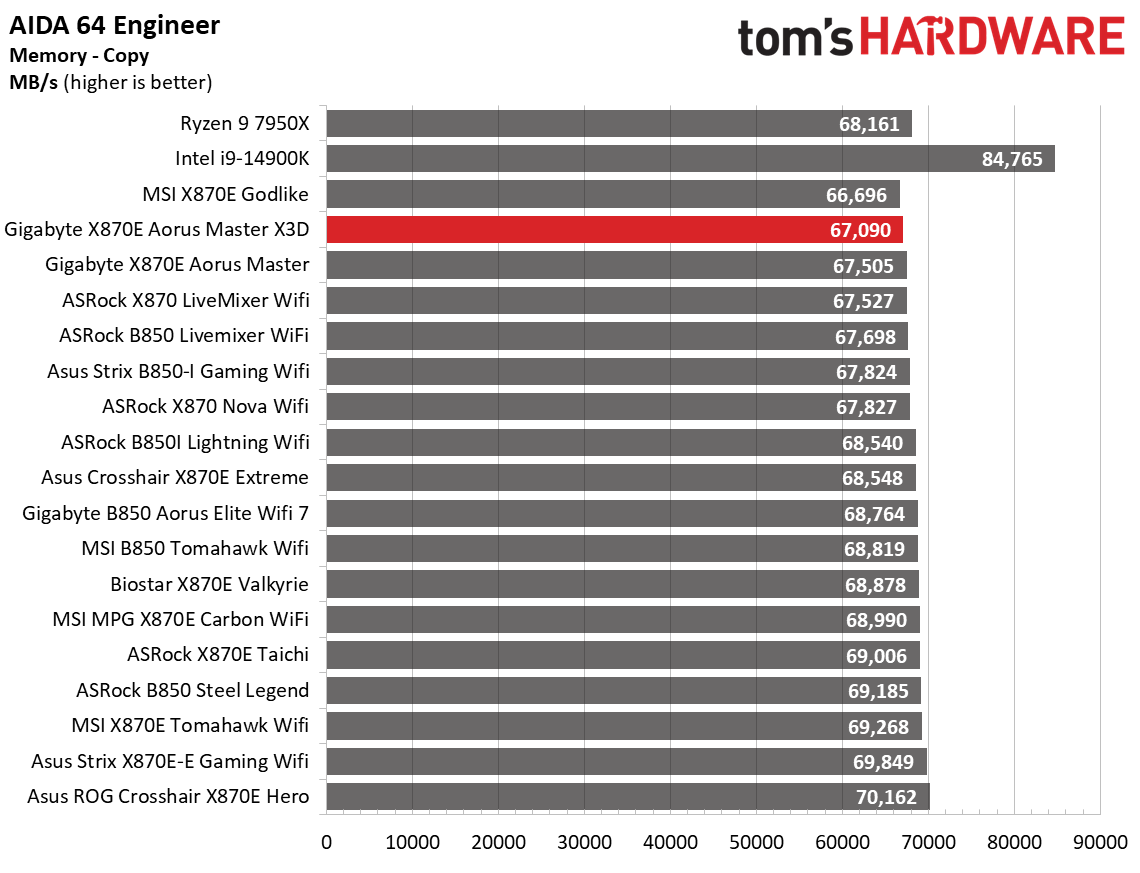
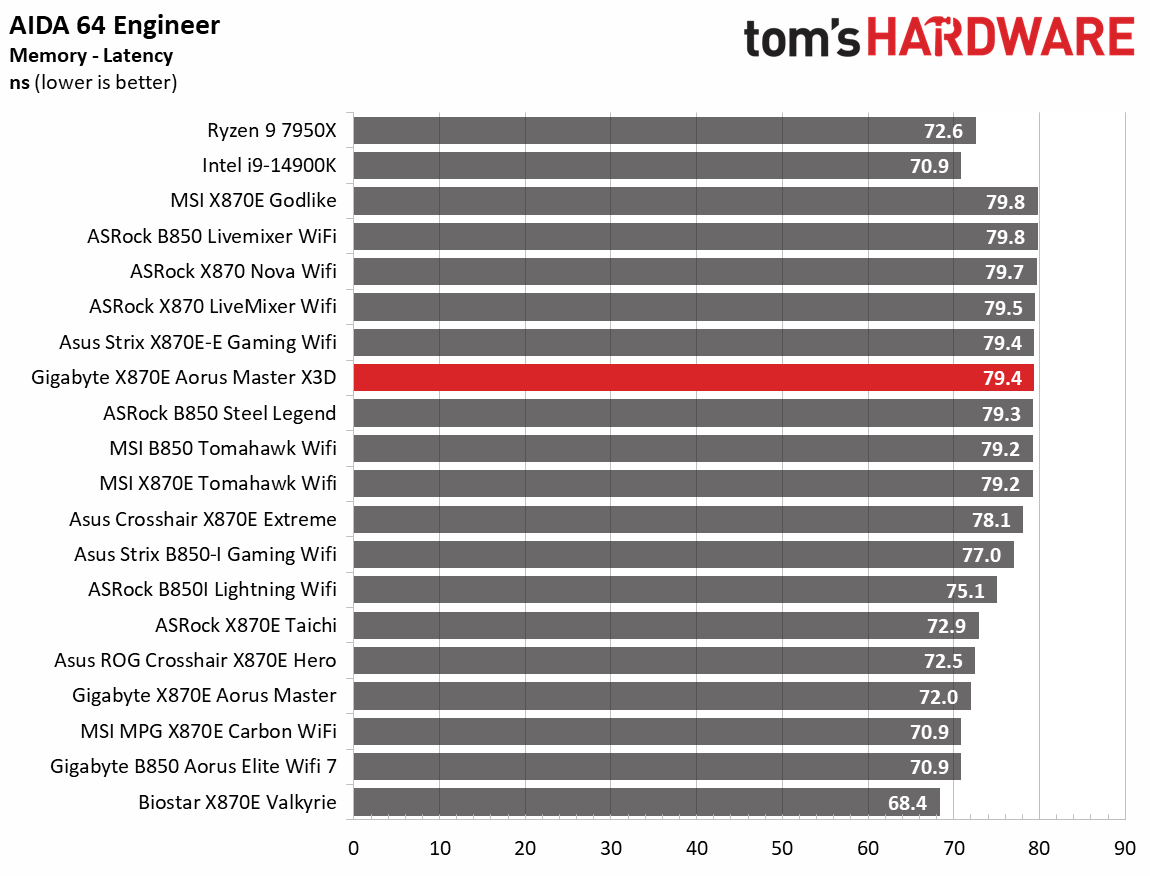
Please note that in these tests, we have three highlighted results. The first is this board, and the second is our X3D Turbo testing with a Ryzen 7 9800X3D. We’ll talk about those in the overclocking section.
Overall, our synthetic benchmark results were average-looking across all of the results. It was a little slower than most in the Procyon MS Office test, but you wouldn’t notice the difference—nothing out of the ordinary here.
Timed Applications
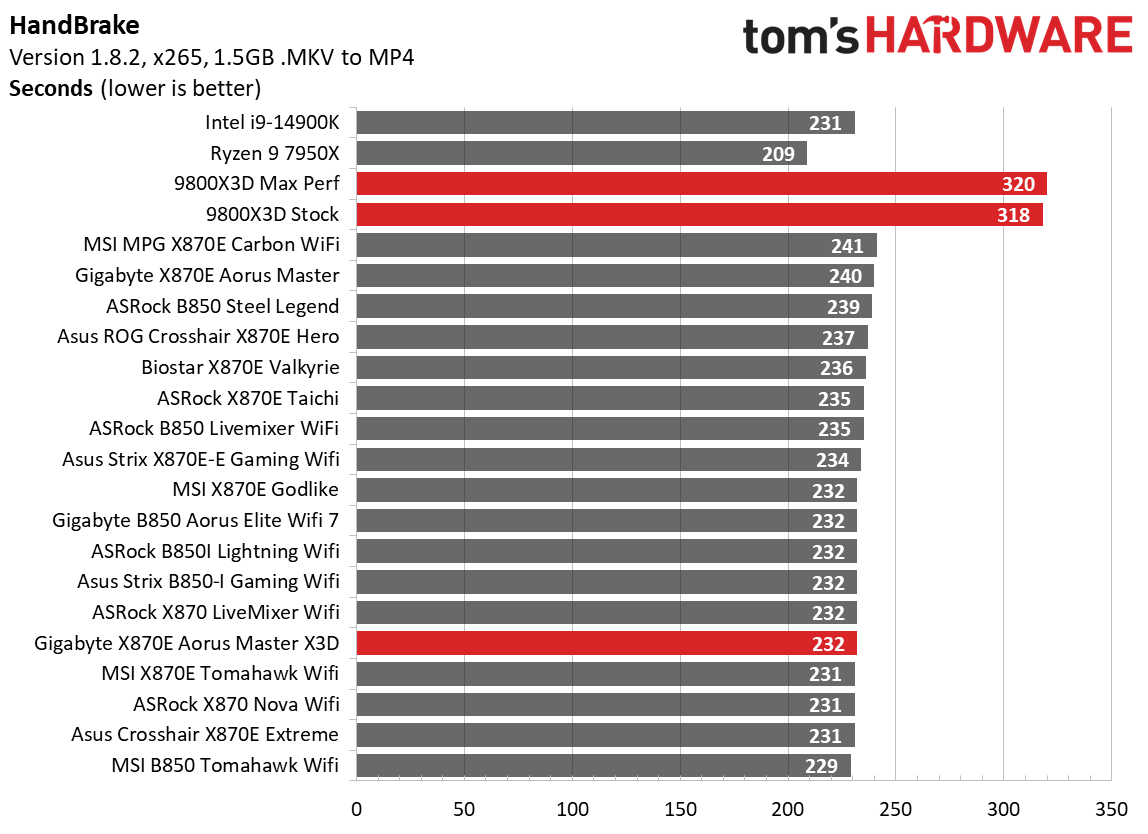
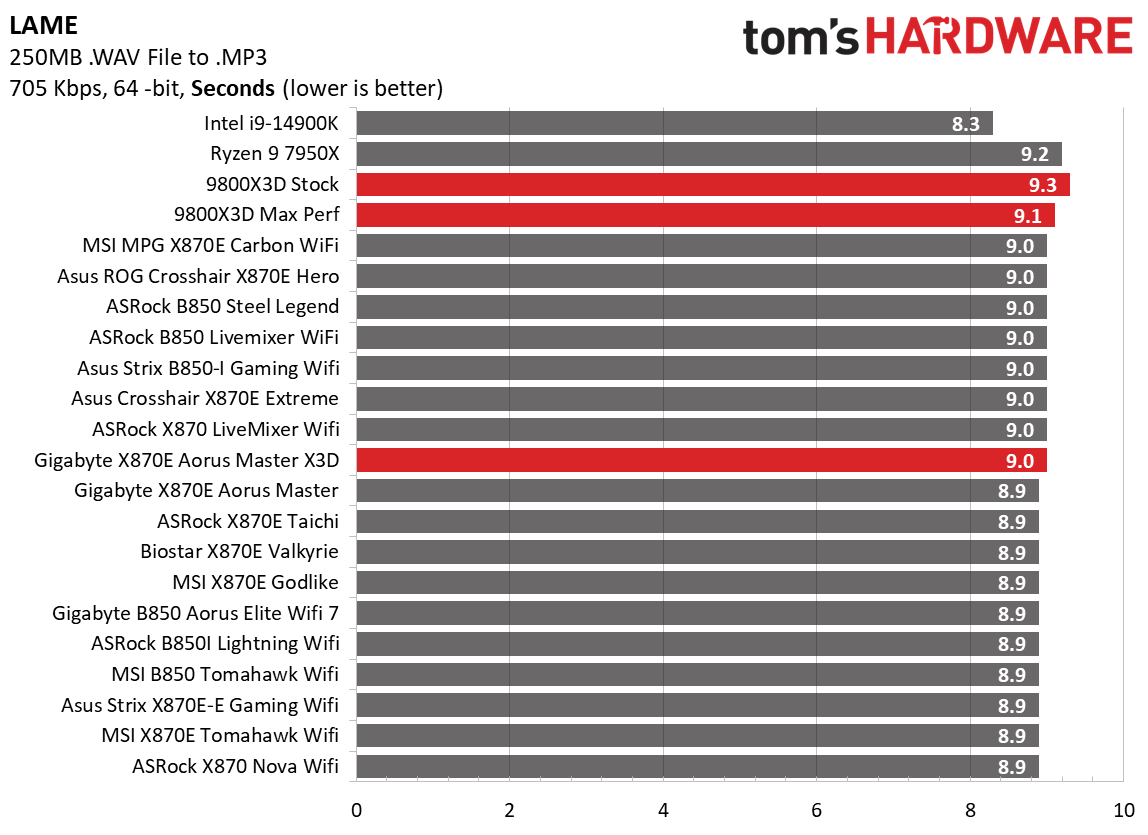
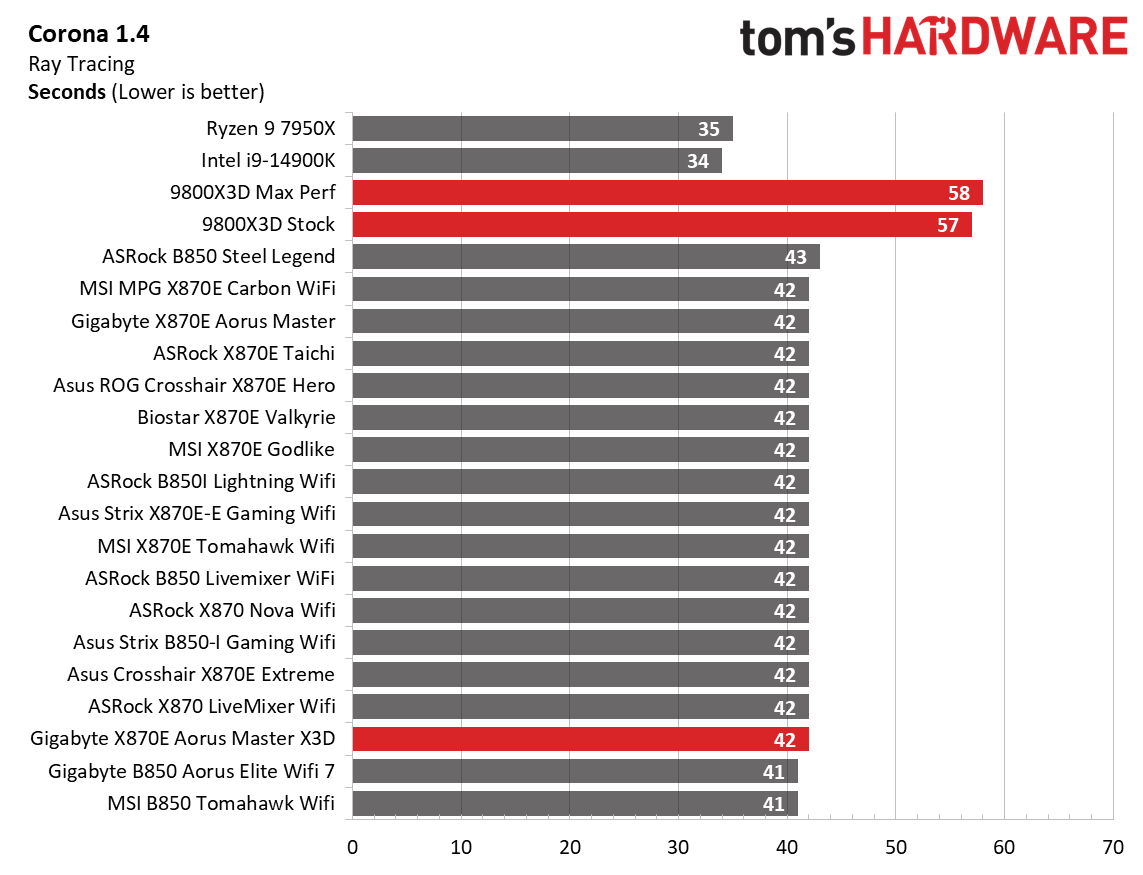
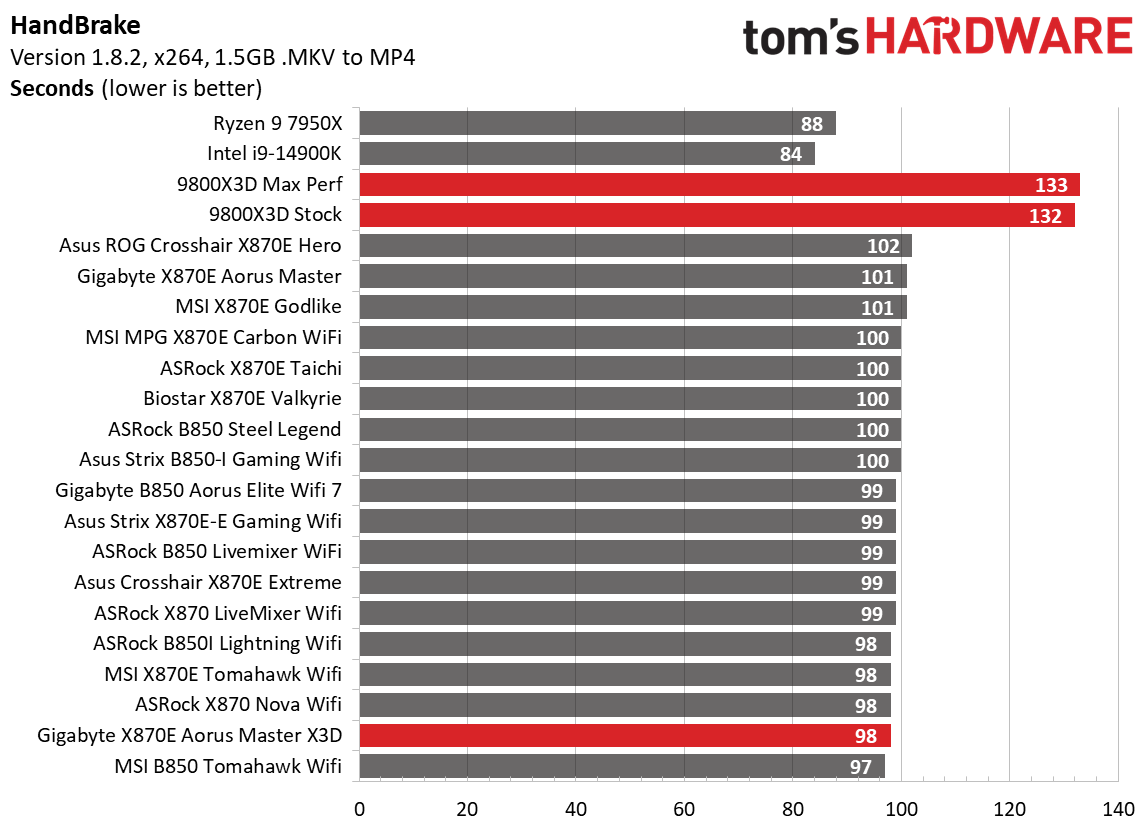
Timed tests were average to above average, with the X3D board performing particularly well in the Handbrake tests. All good in this set of tests, too.
3D Games and 3DMark
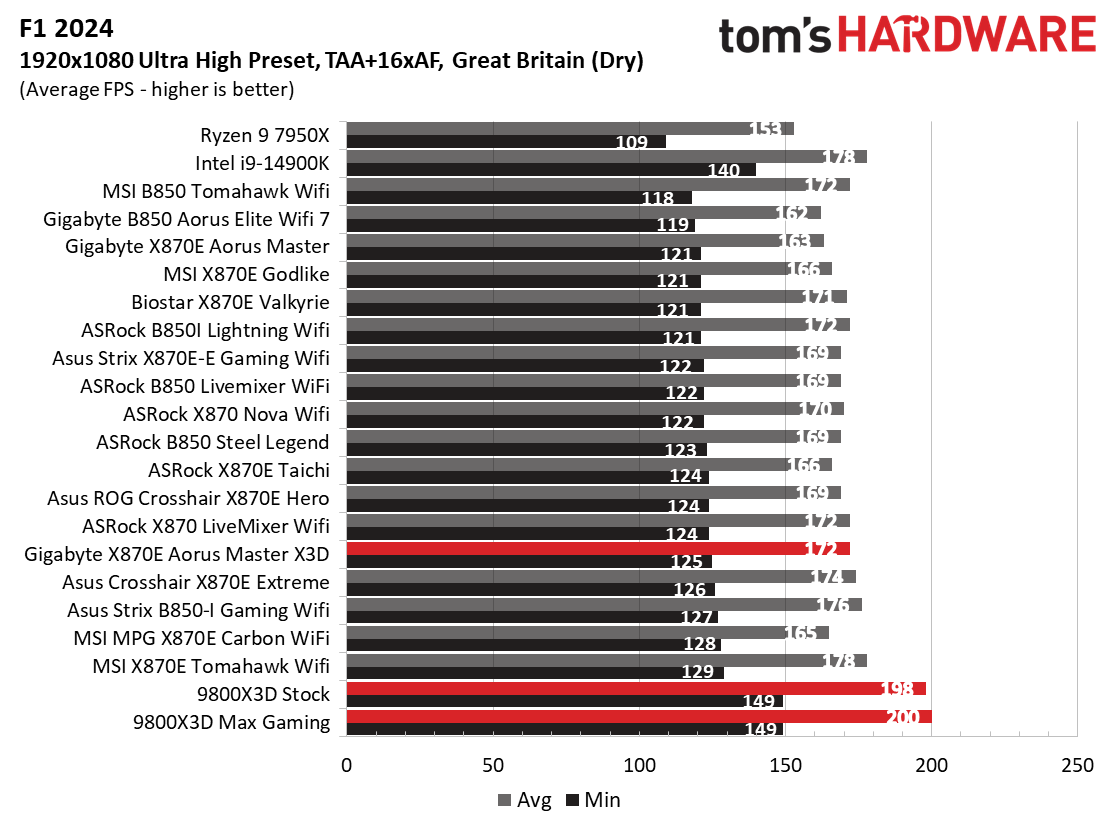
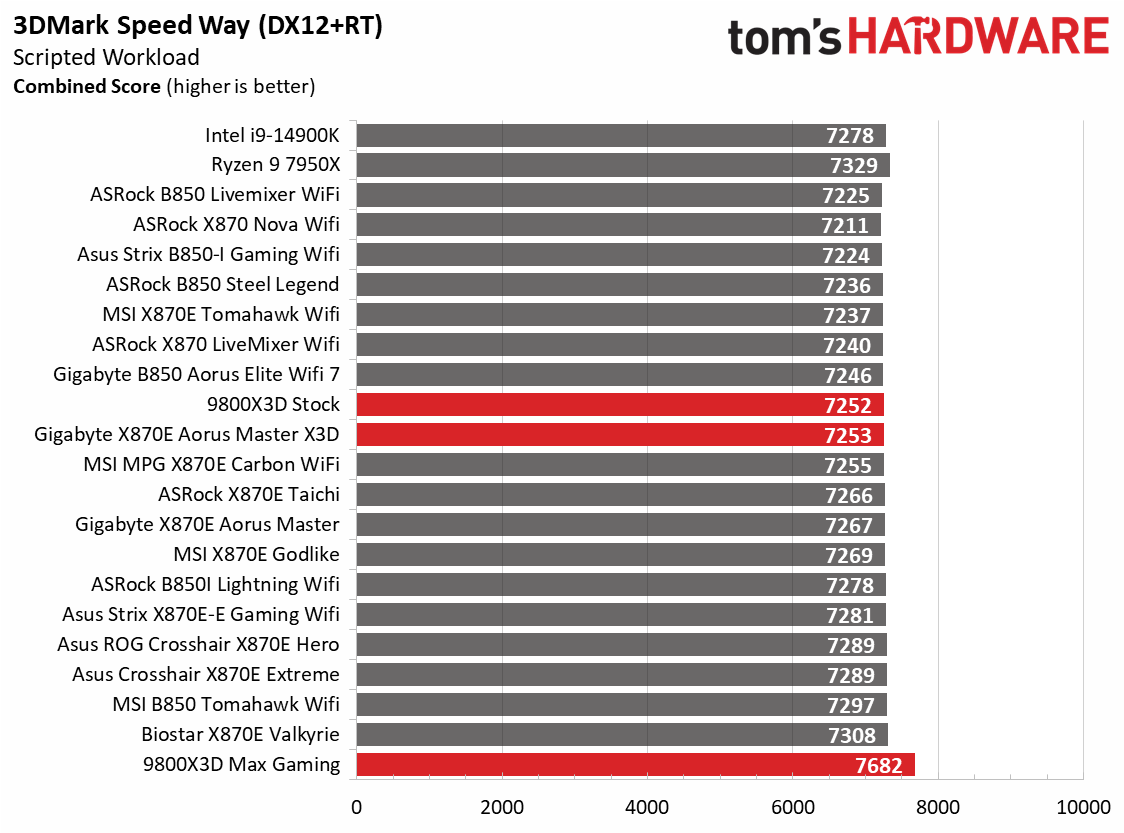

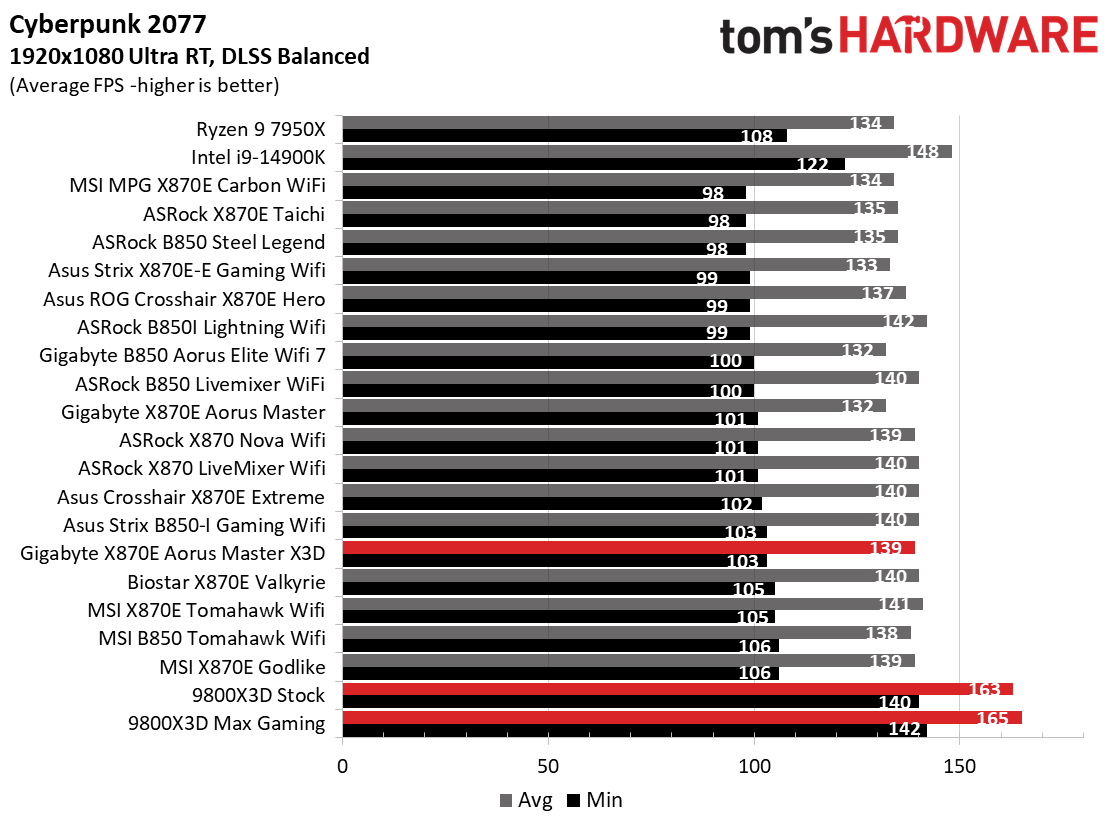
Starting with the launch of Zen 5, we’ve updated our game tests. We’re keeping the EA’s F1 racing game and have upgraded to the most current version, F1 24. We also dropped Far Cry 6 in favor of an even more popular and good-looking game in Cyberpunk 2077. We run both games at 1920x1080 resolution using the Ultra preset (details listed above). Cyberpunk 2077 uses DLSS, while we left F1 24 to native resolution scaling.
The goal with these settings is to determine if there are differences in performance at the most commonly used (and CPU/system bound) resolution with settings most people use or strive for (Ultra). We expect the difference between boards in these tests to be minor, with most falling within the margin of error differences. We’ve also added a minimum FPS value, which can affect your gameplay and immersion experience.
Gaming performance was satisfactory here as well. We saw a weaker showing in the 3DMark Steel Nomad test, but the Gigabyte board performed well in our two games, settling in the top third of our results.
Overclocking
Over the past few CPU generations, overclocking headroom has been shrinking on both sides of the fence while the out-of-the-box potential has increased. For overclockers, this means there’s less fun to have. For the average consumer, you’re getting the most out of the processor without manual tweaking. Today’s motherboards are more robust than ever, and they easily support power-hungry flagship-class processors, so we know the hardware can handle them. There are multiple ways to extract even more performance from these processors: enabling a canned PBO setting, manually tweaking the PBO settings, or just going for an all-core overclock. Results will vary and depend on the cooling as well. In other words, your mileage may vary. Considering all the above, we will not be overclocking the CPU. However, we will try out our different memory kits to ensure they meet the specifications.
Get Tom's Hardware's best news and in-depth reviews, straight to your inbox.
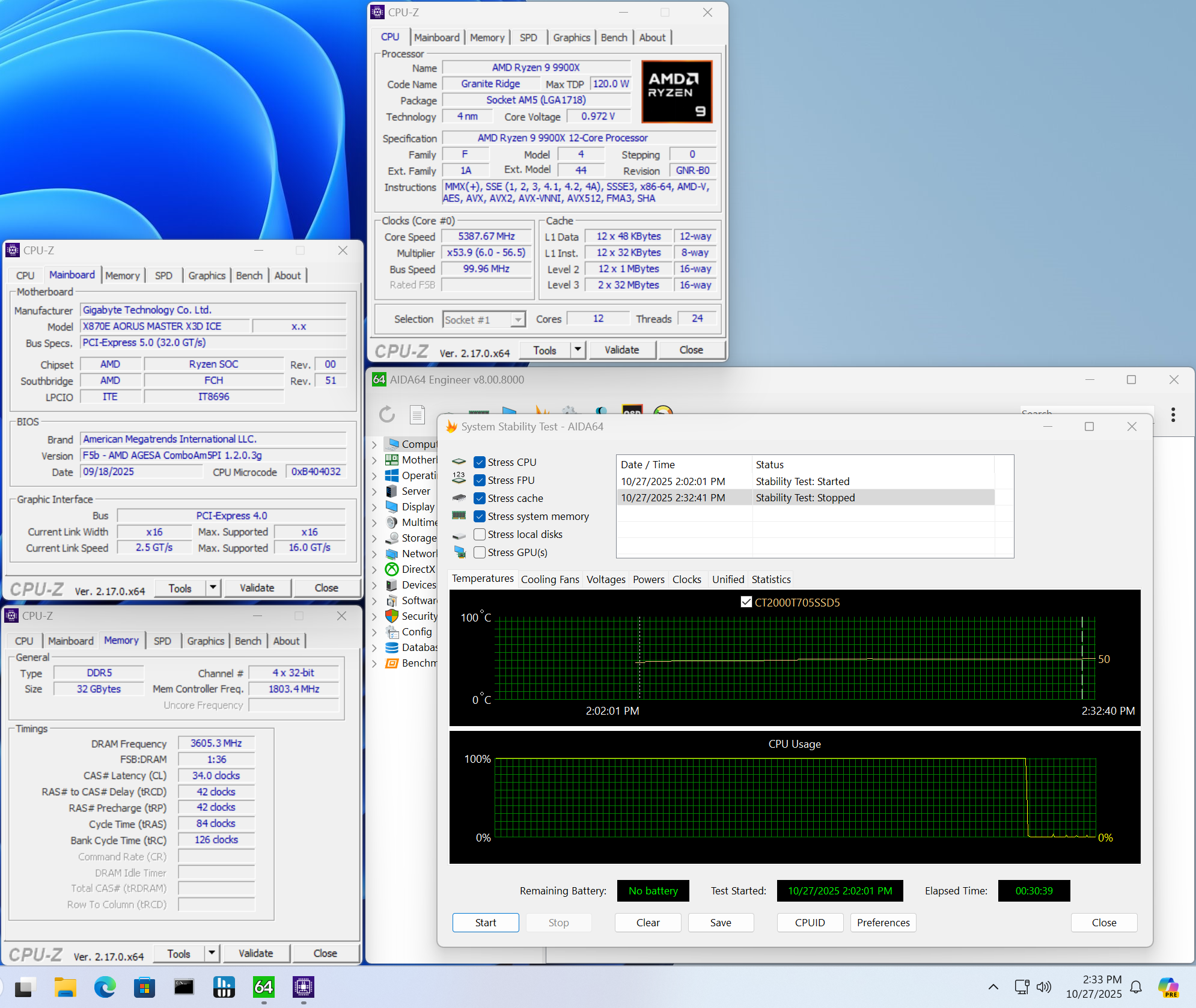
As you can see from the image above, we successfully tested using DDR5-7200. The Klevv DDR5-8000 kit booted to Windows and ran the AIDA64 memory bandwidth test, but couldn’t pass the stress test out of the box. Again, that’s well past the price-performance sweet spot anyway, and our kit isn’t on Gigabyte’s QVL list, so we can’t hold that against it.
One of the key features is that these boards are specifically designed for the X3D chips, featuring X3D Turbo 2.0 functionality. These AI-trained models and dedicated hardware block are said to extract the most out of the high-cache X3D chips and offer three settings: Standard (default), Max Performance, and Max Gaming. We only tested the Gaming preset in 3DMark and our games, but tested stock versus ‘Max Performance’ across the rest of our tests. As you should glean from our results, at least in our tests (see the 9800X3D entries in the charts above), Max Performance was either the same as or slower than Standard across most tests, but it did improve in the Procyon Office testing.
On the gaming side, we observed a significant increase after enabling the gaming setting, which disables hyperthreading and runs the 8-core/16-thread configuration at 8-core/8-thread, with slightly higher clock speeds. As you can see, the 3DMark tests showed a notable increase. However, the two games we tested didn’t show significant improvement. All that said, I wouldn’t buy Gigabyte boards for the X3D feature alone, as, at least in our limited testing, we didn’t see a significant enough increase. That said, there are plenty of other reasons.
Power Consumption / VRM Temperatures
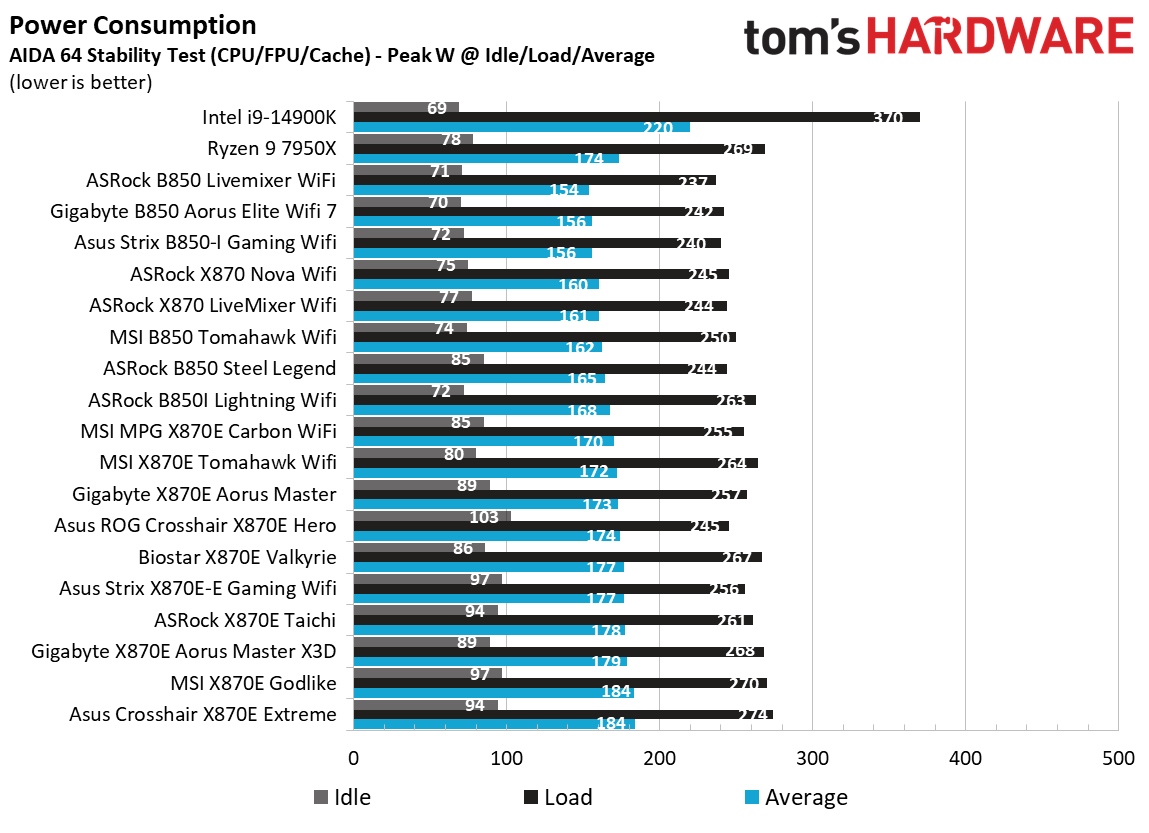
We used AIDA64’s System Stability Test with Stress CPU, FPU, cache, and Memory enabled for power testing, using the processor's peak power consumption value. The wattage reading is obtained from the wall via a Kill-A-Watt meter, capturing the entire PC (excluding the monitor). The only variable that changes is the motherboard; all other parts remain the same. Please note that we moved to using only the stock power use/VRM temperature charts, as this section aims to ensure the power delivery can handle flagship-class processors.
Power usage during our testing was also within normal limits. Idle sat at 89W, slightly higher than average, with a peak of 268W, which places it towards the higher end of use, but nothing alarming.
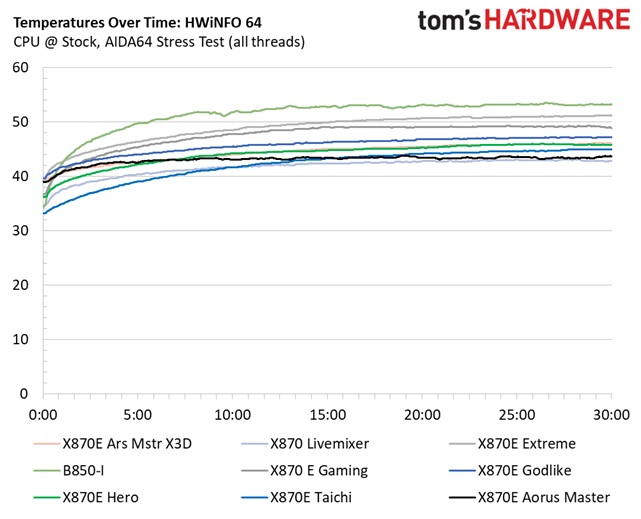
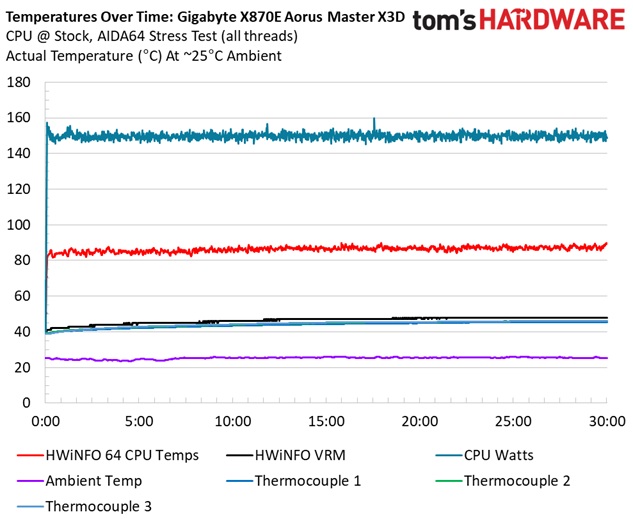
VRM temperatures were well within normal range, with the 110A MOSFETs peaking at 46 degrees Celsius on our sensor, and 48 degrees Celsius on the internal sensor during our AIDA stress test. The large heatsink and ventilation can keep the power delivery bits running within specification. There’s plenty of headroom for more power-hungry chips and overclocking, even a Ryzen 9 9950X using PBO.
Bottom Line
As a premium motherboard designed for the latest AM5 systems, the Gigabyte X870E Aorus Master X3D Ice presents a highly appealing combination of aesthetics and high-end features. It has been significantly updated with a revised hardware configuration, a new design, and an expanded BIOS. This ensures comprehensive support for newer CPUs, while maintaining all existing functionalities, making it a compelling choice for anyone building a new system.
In terms of performance, the board delivers expected, average results when utilizing the latest AGESA. Notably, we did not observe a significant out-of-the-box performance boost from the updated X3D Turbo mode, meaning it shouldn't be the sole reason for purchase. While our testing is limited, specifically in gaming—where this feature's impact is most relevant—performance gains will depend on the game, resolution, and settings, with more pronounced improvements generally seen in 1080p (CPU-bound) scenarios.
Priced at $649.99, we appreciate this board’s clean, "icy" appearance, solid hardware configuration, and numerous EZ/DIY features. It is a clear upgrade over the non-X3D version and is better equipped to handle both current and future AMD processors. Be aware of the limited USB Type-A port count and temper expectations regarding the across-the-board performance improvements from the updated Turbo 2.0. Although it didn't make our top Motherboard list, it’s a solid option in the premium mid-range segment.
MORE: Best Motherboards
MORE: How To Choose A Motherboard
MORE: All Motherboard Content

Joe Shields is a staff writer at Tom’s Hardware. He reviews motherboards and PC components.
-
eichwana You mention you don’t see an improvement with the turbo 2.0 feature designed for X3D chips, but then you don’t use an X3D chip? According to your specs you’ve used a 9900X non-X3D. Perhaps there’s only an improvement if you use the board with the chip it’s designed to improve performance for?Reply -
SonoraTechnical Con?Reply
Only '7' USB-A ports along with the '4' USB-C ports on the back plate... You are calling 11 USB ports on the back plate alone a Con? Good grief...
